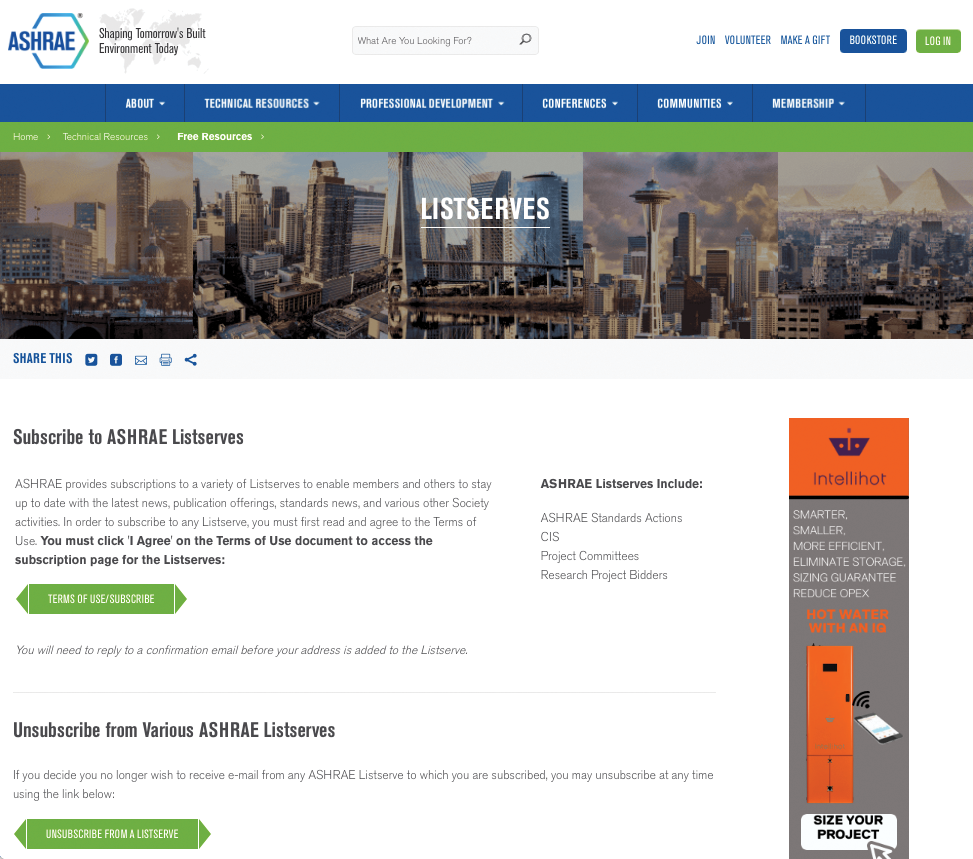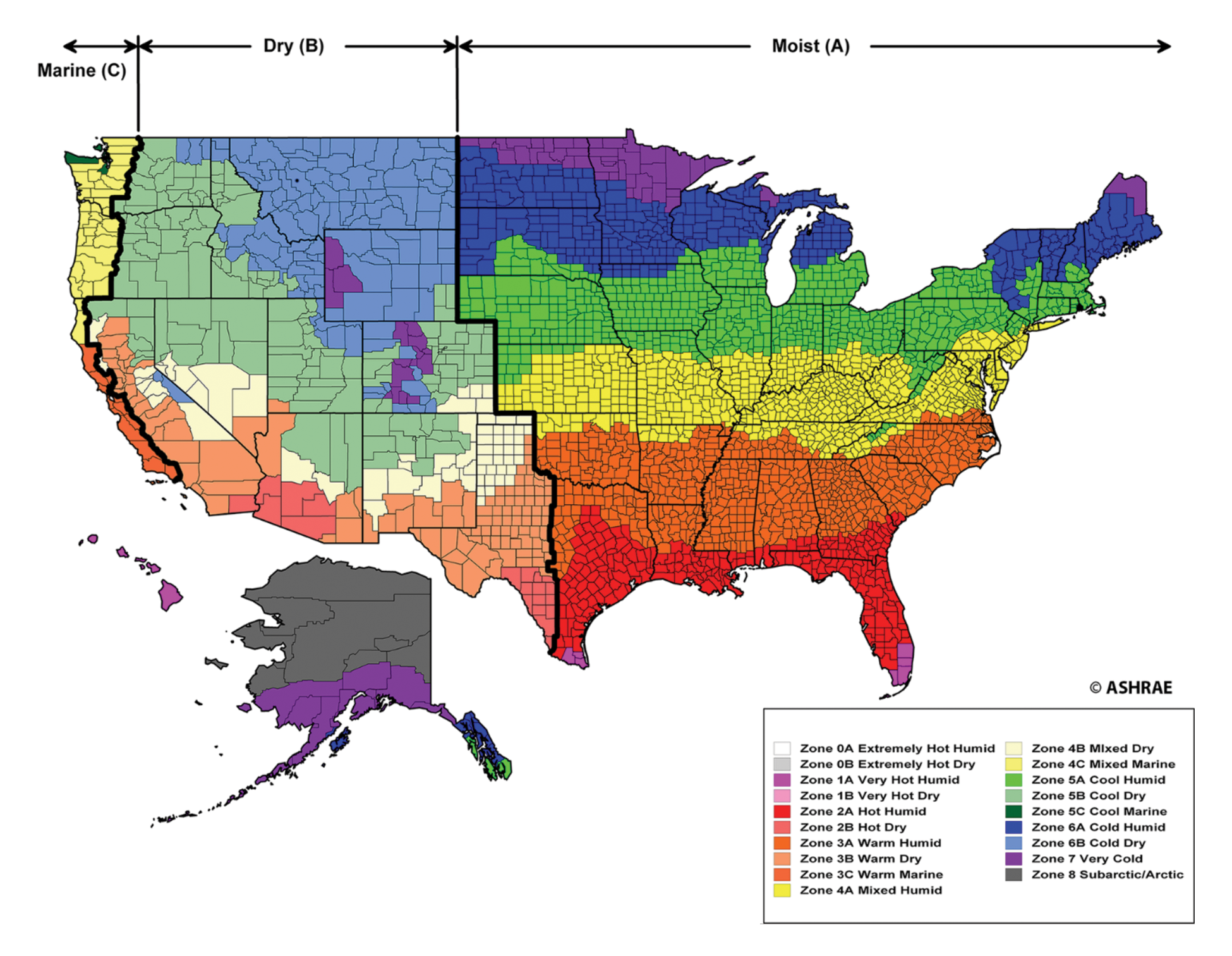In the article “The room where it happens” published in the August 2020 issue, readers were acquainted with NRCA’s involvement with the ASHRAE standards development process. The article provided a brief history of ASHRAE and the intent of ASHRAE Standard 90.1, “Energy Standard for Buildings Except Low-Rise Residential Buildings.”
ASHRAE Standard 90.1 is referenced in the International Code Council®’s International Energy Conservation Code,® International Existing Building Code,® International Fire Code,® International Mechanical Code,® International Plumbing Code® and International Residential Code.®
ASHRAE Standard 90.1 may affect a roofing project either through reference in IECC or IRC or as an adopted energy code by a local jurisdiction. Following is an overview of recent ASHRAE activity and updates to the standard.
The ASHRAE process
The intent of ASHRAE Standard 90.1 is to provide minimum energy-efficient requirements for the design and construction of new and commercial buildings, as well as new additions to existing commercial buildings. The standard also provides requirements for the plan and operation of new systems and equipment in new commercial buildings, existing buildings and new additions to existing buildings.
Currently, a roof system re-cover project does not require a maintenance plan, but the standard is unclear whether such a plan is required for a roof system replacement. ASHRAE Standard 90.1 provides criteria for determining compliance with the requirements contained within the standard.
The standard specifically states the requirements do not apply to low-rise residential buildings, including single-family homes, multifamily buildings of three stories or fewer above grade, manufactured houses (mobile homes) and manufactured houses (modular). Buildings that do not use electricity or fossil fuels also are not covered by the standard.
The current edition, ASHRAE Standard 90.1-2019, was published in October 2019 and is referenced in IECC 2021. ASHRAE Standard 90.1-2016 is referenced in IECC 2018. As previously stated, local jurisdictions also may elect to adopt the standard before adoption of IECC 2021.
The ASHRAE Standard 90.1 update process is similar to the more familiar I-Codes process. Both go through a public review and comment period and have voting members who approve the different documents. The I-Codes are reviewed by a committee of about 15 members with final approval voted on by ICC’s governmental members (code officials) from across the U.S.
ASHRAE Standard 90.1 is approved for publication by a committee of about 40 to 50 members. The I-Codes are updated and modified every three years, which is the only time changes may be submitted. ASHRAE Standard 90.1 also is published every three years and ahead of the associated I-Codes.
However, ASHRAE Standard 90.1 is a continual maintenance document. This means ASHRAE Standard 90.1 can be revised or updated at any time. A proposed change to the standard may be submitted between publication dates. If approved, the change is published as an addendum that immediately can be adopted by a jurisdiction as a mandatory requirement. Then, at the next publication date, all approved addendums since the previous publication date are automatically incorporated into the new published standard.
ASHRAE’s Standing Standards Project Committee is responsible for maintaining Standard 90.1 and comprises five subcommittees. Issues related to roofing, such as R-value and insulation, air barriers and thermal bridging, are addressed by the Envelope Subcommittee, of which NRCA is a voting member.
Typically, the Standing Standards Project Committee and Envelope Subcommittee meet face-to-face four times annually—at winter, spring, summer and fall interim meetings. In addition, the Envelope Subcommittee conducts business regularly via conference calls twice per month.
2020 activity
The Standing Standards Project Committee and Envelope Subcommittee met in person for the planned winter meeting in January 2020, but since then the committee meetings have been held virtually.
During 2020, the Envelope Subcommittee and Standing Standards Project Committee reviewed and published the Standard 90.1 User’s Manual based on ASHRAE Standard 90.1-2019. ASHRAE Standard 90.1 can be a relatively complicated document and somewhat difficult to follow and understand. The user’s manual is a companion document to ASHRAE Standard 90.1 to help clarify the requirements and guide designers, engineers, contractors, code officials and building owners regarding compliance and includes examples where appropriate.
Other primary Envelope Subcommittee activities during 2020 included the review and continued development of a proposed thermal bridging addendum, an air leakage addendum and discussions about the criteria of cool walls.
The first public review for the thermal bridging addendum occurred in August 2018 and received 246 comments made by 41 commentors. During the first quarter of 2020, the Envelope Subcommittee completed its review of each comment. Any comments that were found persuasive were incorporated into the addendum, and a second public review period was held from late March 2020 to early May 2020.
The review period can be 30, 45 or 60 days based on the Standing Standards Project Committee chair’s request. A 30-day review period only is permitted when the proposed addendum is fewer than one page. The second review period garnered 107 comments from 16 commentors. These comments were reviewed by the Envelope Subcommittee during the second half of 2020.
A few examples affecting the roofing industry as a result of the thermal bridging addendum are roof edges, parapets and equipment support stands. Currently, the thermal bridging addendum exempts fasteners for insulation and/or membrane attachment.
Another item of interest to the roofing industry from the Envelope Subcommittee’s recent work is a proposed building air leakage addendum. A few items being discussed for this addendum include termination or tie-ins to roof membrane perimeters, penetrations through the membrane, building pressurization testing, roof detail review and roof installation observation requirements. The proposed addendum as currently drafted exempts roof re-covers and roof system replacements from meeting the air leakage requirements if the energy use of the building is not increased as a result of the work.
During the second half of 2020, the discussion regarding how to calculate the R-value for roof tapered insulation systems was initiated because it currently is not addressed in ASHRAE Standard 90.1-2019. In conjunction with the tapered insulation discussion was the infeasibility of increased insulation thickness when reroofing to meet minimum R-value requirements as a result of existing rooftop conditions.
Of interest to companies that install roofing materials as well as wall cladding materials is the Envelope Subcommittee’s discussion of a proposed cool wall addendum. Similar to cool roof requirements, walls, particularly those with an eastern, southern or western orientation, would be required to meet a minimum reflectivity, provide window shading or meet other criteria.
In October 2020, ASHRAE published Standard 169-2020, “Climatic Data for Building Design Standards.” This is important for users of ASHRAE Standard 90.1 because the climate zone map contained in ASHRAE Standard 169-2020 is referenced in ASHRAE Standard 90.1 when determining R-values or U-factors.
The new U.S. climate zone map has been incorporated into IECC 2021 and is shown in the figure. Of note is the northerly migration of some of the climate zones, particularly 3, 4 and 5. Also, Climate Zone 1 in south Florida is larger and has expanded to include the southern tip of Texas.
Reducing energy consumption
ASHRAE Standard 90.1 seeks to reduce the energy consumed by buildings, and updating the standard to reflect current technologies is an ongoing process. For more information, visit ashrae.org.
Glen Clapper, AIA, LEED AP, is an NRCA director of technical services.
For more ASHRAE information

If you have an interest in participating in ASHRAE through the public review process, you can sign up to receive notices on ASHRAE’s website at ashrae.org.
Or, if you prefer to periodically check in to see what ASHRAE has available for public review and comment, visit osr.ashrae.org.
Addendums to current ASHRAE standards are published and also available on ASHRAE’s website at ashrae.org.




